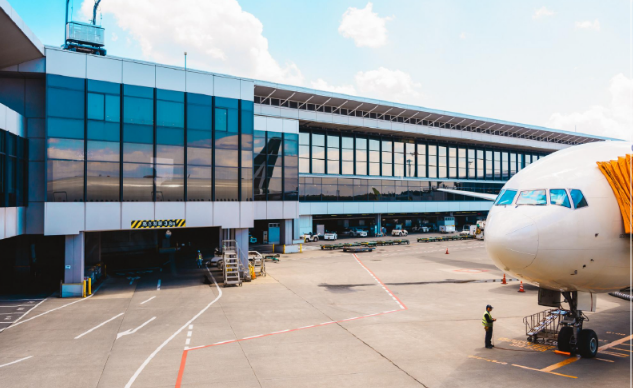Air travel has become an essential part of modern life, connecting people across the globe for business and leisure. One of the most critical aspects of the travel experience is navigating airport terminals efficiently. Airline terminals are more than just waiting areas; they are dynamic hubs designed to facilitate seamless passenger movement, ensuring comfort and convenience. Understanding how to navigate these terminals effectively can make your journey smoother and more enjoyable.
Understanding Airline Terminals
An airline terminal is a building at an airport where passengers board and disembark from flights. It serves as the gateway to air travel, providing essential services such as ticketing, check-in counters, security checkpoints, baggage claim, lounges, and dining options. Some airports have multiple terminals dedicated to specific airlines or types of flights, such as domestic and international travel.
Major Components of an Airline Terminal
Check-in Counters and Kiosks The first step in any journey through an airport is the check-in process. Passengers can check in at airline counters or use self-service kiosks to print boarding passes and baggage tags.
Security Screening After check-in, passengers must pass through security screening, where they are scanned for prohibited items. TSA (Transportation Security Administration) or equivalent authorities ensure safety for all travelers.
Departure Gates Gates are the areas where passengers board their flights. Airports assign gate numbers based on airline schedules, and passengers should arrive at their gate well in advance.
Lounges and Waiting Areas Many airline terminals feature premium lounges for business and first-class travelers. These lounges offer complimentary food, beverages, and a relaxing atmosphere before departure.
Shopping and Dining Modern airline terminals are designed to offer a range of shopping and dining experiences. Travelers can explore duty-free shops, luxury boutiques, and food courts with global cuisine.
Baggage Claim and Immigration Upon arrival, passengers retrieve their luggage from baggage claim areas. International travelers must also pass through immigration and customs before exiting the airport.
Navigating Airline Terminals Effectively
For a hassle-free travel experience, it's essential to familiarize yourself with the layout of the airport terminal you will be using. Here are some tips:
Check Your Terminal in Advance: Airports often have multiple terminals, and different airlines operate from specific ones. Checking your airline’s terminal beforehand can save you time.
Arrive Early: Depending on the airport and destination, arriving 2–3 hours before your flight ensures ample time for check-in and security screening.
Use Airport Maps and Apps: Many airports provide mobile apps with real-time flight updates and interactive maps.
Follow Signage and Announcements: Clear airport signage helps direct passengers to check-in counters, gates, and baggage claim areas.
Keep Travel Documents Ready: Having your passport, boarding pass, and any necessary visas handy will speed up the boarding process.
Top Airports with the Best Terminals
Some airports are renowned for their world-class airline terminals, offering an exceptional passenger experience. Here are a few standout terminals:
1. Singapore Changi Airport (SIN) - Terminal 3
Changi Airport consistently ranks among the best in the world. Terminal 3 offers lush gardens, a butterfly habitat, and luxury shopping options.
2. Dubai International Airport (DXB) - Terminal 3
Serving as the hub for Emirates, Terminal 3 is one of the largest in the world, featuring a massive duty-free shopping area and premium lounges.
3. Heathrow Airport (LHR) - Terminal 5
British Airways operates primarily from Terminal 5, which is known for its modern design, efficient services, and excellent dining options.
4. Los Angeles International Airport (LAX) - Tom Bradley International Terminal
The Tom Bradley Terminal is famous for its advanced technology, spacious interiors, and wide range of international dining choices.
5. Tokyo Haneda Airport (HND) - Terminal 2
Haneda Airport's Terminal 2 is praised for its cleanliness, efficiency, and high-quality amenities.
The Role of Airline Terminals in Passenger Experience
Airline terminals play a crucial role in shaping a traveler’s overall experience. Airports that prioritize passenger comfort with modern facilities, efficient security procedures, and diverse amenities stand out as preferred transit points. Enhancing the airport experience includes reducing wait times, providing digital check-in services, and offering entertainment options such as airport museums and relaxation zones.
To learn more about different airport terminals, including guides and travel tips, visit airline-terminals, a dedicated platform for aviation enthusiasts and travelers.
Future Trends in Airline Terminals
With technological advancements and increasing passenger volumes, the future of airline terminals is evolving. Here are some emerging trends:
Automated Check-in and Baggage Handling: Self-service kiosks, biometric scanners, and AI-driven baggage tracking enhance efficiency.
Sustainable Terminal Designs: Airports are adopting eco-friendly initiatives, including solar power, energy-efficient buildings, and water conservation systems.
Smart Airports with AI and IoT: Artificial intelligence and the Internet of Things (IoT) are improving real-time tracking of passenger flow and personalized services.
Contactless Travel Solutions: Digital boarding passes, facial recognition technology, and contactless payment options are becoming standard features.
Conclusion
Airline terminals are more than just transit points; they are essential components of the travel experience. Understanding their layout, services, and innovations can help travelers navigate airports more efficiently and enjoy their journeys. With continuous advancements in technology and passenger services, the future of airline terminals promises an even more seamless and enjoyable travel experience.




Write a comment ...